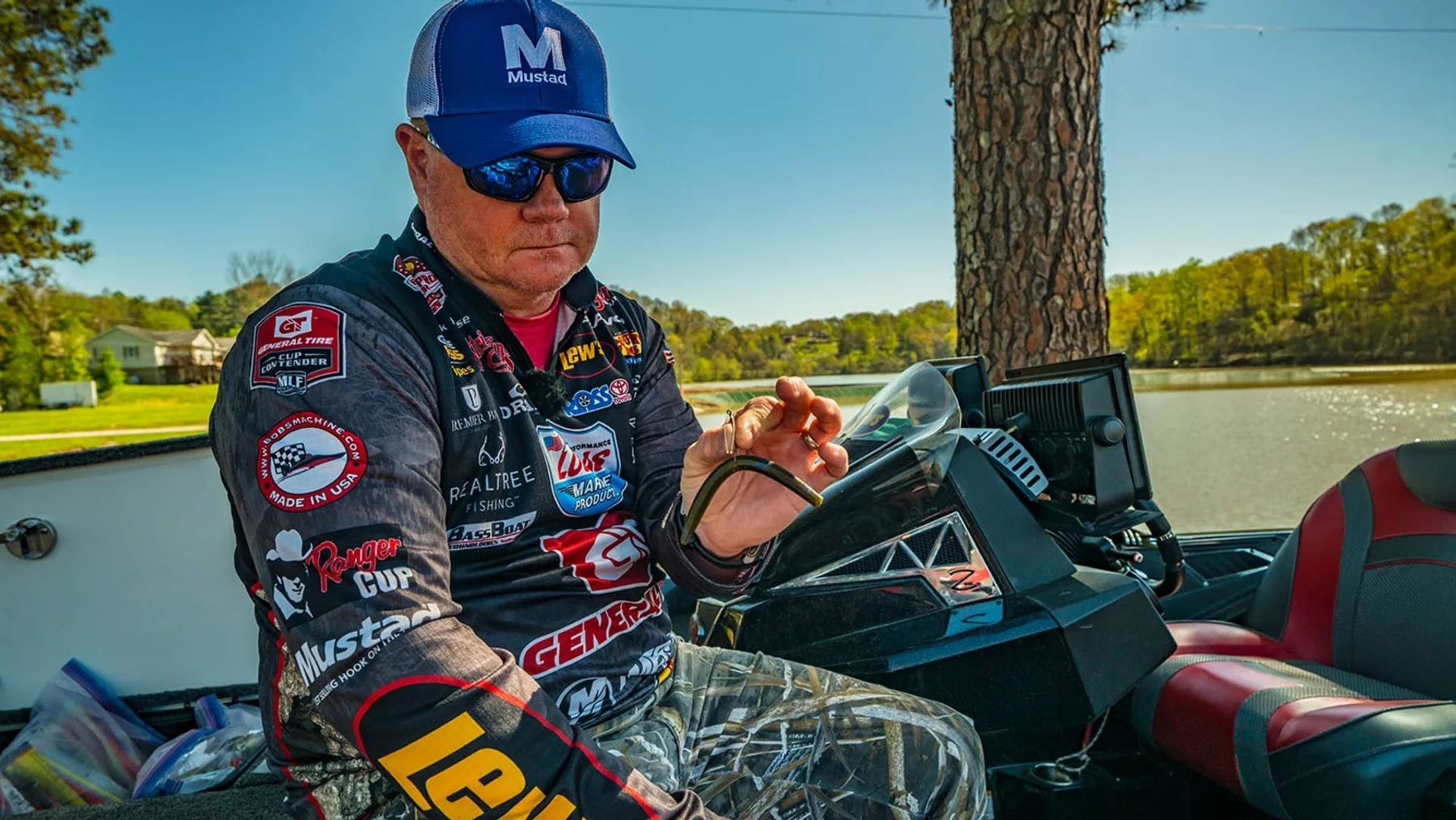Winning With Wacky

Plastic worms are designed to mimic live prey, but doing so usually means imparting some type of motion. Many rigs will accomplish this goal, but none as easily as the wacky rig.
In its simplest form, a wacky rig comprises a worm — typically a stick style worm — with a hook positioned at the middle. The benefit here is nearly constant motion due to your hook serving as a fulcrum with both ends of the bait wiggling independently. Anglers often observe that a wacky rig is always fishing because those ends wiggle on the fall, as well as the rise, with lots of action in between.
Flipped to laydowns, pitched to bedding fish, skipped under docks, blind cast to grass points — the wacky rig’s applications are many. Consistent for all is a subtle presentation with lots of enticing motion.
Wacky Rigging
Mustad’s Titan-X Wacky/Neko hook is ideally suited for this finesse presentation, as it combines a slender profile with a stout composition that’ll stand up to whatever bites. Some opt for running their hook through the worm’s side, but you’ll replace your worm after every fish due to the nearly inevitable tearing.
The key to bait preservation is to slip your hook under an O-Ring placed over the worm. This also leaves the hook gap virtually wide open, so your hook ups are cleaner. The only downside of O-rings is that your hook sits parallel to the bait, while a perpendicular position yields better action.
One solution is to criss cross two O-rings and run your hook under the midpoint; but Mustad has a simpler and more efficient answer with an O-ring sporting a small secondary ring sitting in perpendicular orientation. Slide the O-ring onto your worm with the Mustad O-Ring Tool and set your hook through that secondary ring for the ideal wacky rig form.
A Heavier Option
While wacky rigs excel for short-range presentations to shallow targets, they sometimes come up short in certain scenarios. For example, long casts to distant fish may be harder to accomplish, as compared a weighted Texas rig. Additionally, dropping a wacky rig to fish holding deep may require more patience than some can muster.
So, what do you do when you want that center-hooked form with a faster fall? The answer is the Neko rig. This technique has two major differences, the first of which is a nail weight set into the bait’s head. This increases both your casting distance, as well as the fall rate.
Anglers dropping to fish suspending under deep floating docks or along bluff walls will appreciate the ability to quickly reach the strike zone. Meanwhile, the Neko rig’s weighted form enables you to fire off a cast with greater accuracy and longer reach — a significant benefit when you spot schooling fish, or even shallow cruisers that you’d have trouble reaching with a wacky rig.
The other way a Neko rig differs from a wacky rig is hook placement. Rather than a perpendicular alignment, the Neko rig uses an in-line hook position — and one that’s closer to the bait’s head than with the wacky.
Slip the Mustad O-ring onto your bait, but slide that smaller hook ring to the bait’s underside and run your Mustad Titan-X hook under the main ring. The key is to always position your hook so the point faces up, away from the head. With a wacky rig’s lateral presentation, the hook is always facing the fish; whereas, the wacky rig’s vertical orientation makes it necessary to align the hook for maximum hookup effectiveness.
